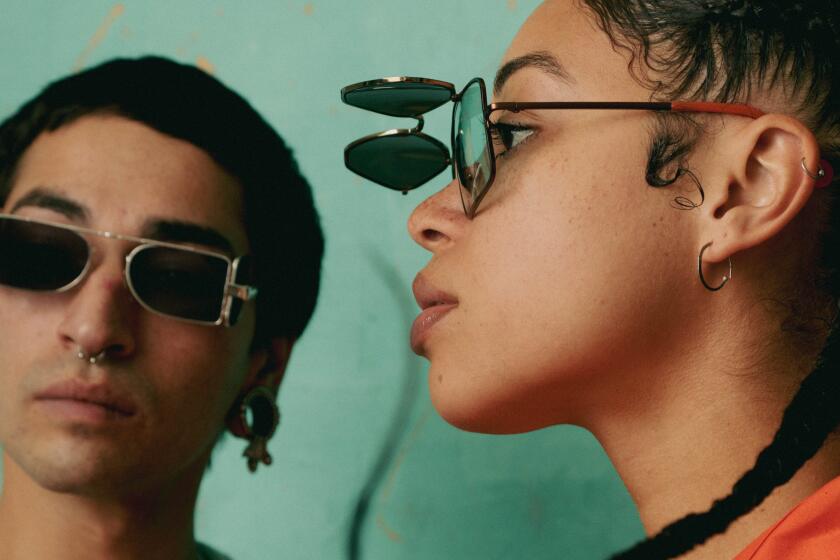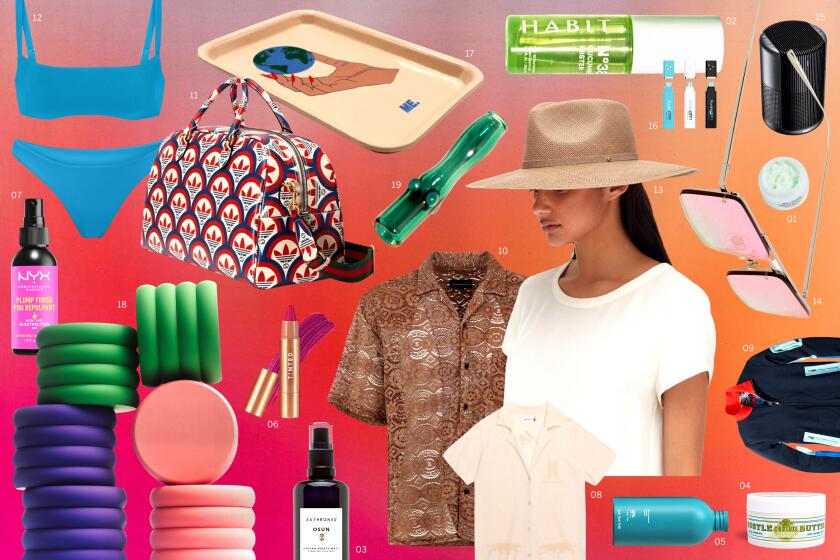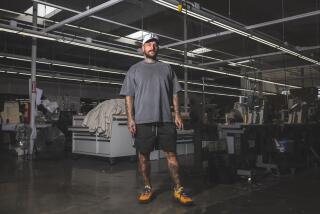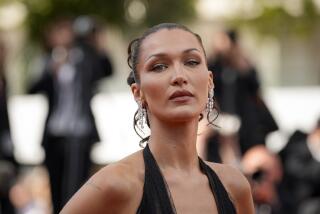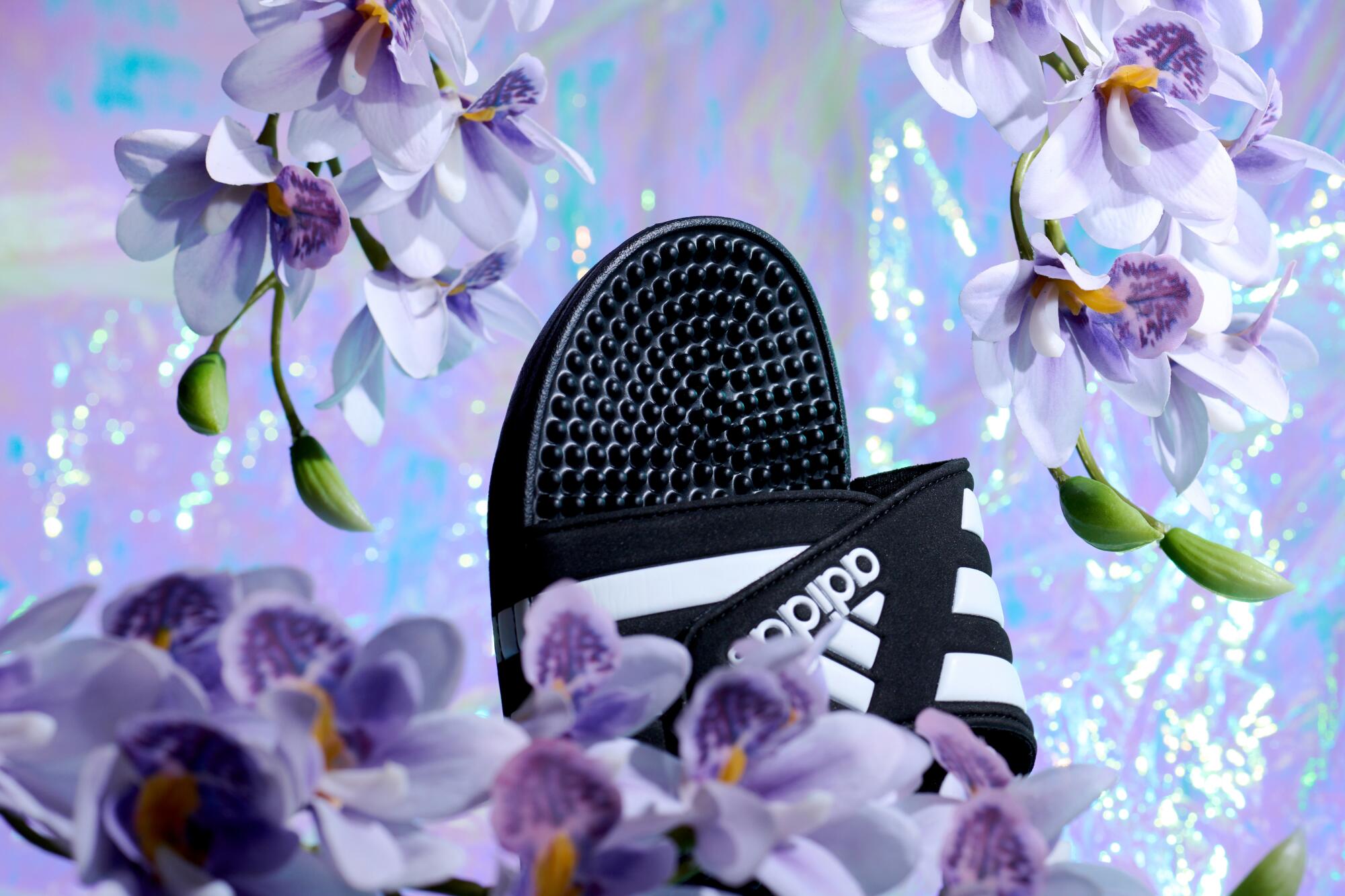
- Share via
They’re the most stubborn of sandals — always a little out of place. I remember them appearing everywhere in the 2000s, like emo music, but without the recall of Spotify it’s hard to remember the shape of the trend. Adidas slides: They’re easy to see in my mind’s eye, the black or blue plastic of the thick, spiky footbed and single strap across the foot, the contrasting white of the three stripes on top, the Adidas trefoil or brand name stamped on the side.
I saw them first in 2003 as I watched Eric, a Korean American high school junior, tee up at the Brentwood Country Club. He wore a flowy white T-shirt, basketball shorts and Adidas slides with white tube socks pulled all the way up.
The coach of our golf team, who had pulled a favor so we could play at the exclusive course for free, was having conniptions. He yelled that Eric’s whole outfit was wrong, especially the slides — the reason golf shoes had cleats was so your feet didn’t move as you swung. Eric waved away his concerns and assured him the look was “gangsta.”
To rock a pair of the iconic frames is to immediately signal to people around you that you don’t just want to stand out; you need to.
We were all terrible at golf, so it was hard to say whether golf cleats would’ve helped our games. But as Eric took his big loping swing, his feet did, indeed, shift. Instead of the crisp Greco-Roman coil of a pro golfer, he looked like a laundry line flapping in the wind.
Eric wore those slides every day to class and to PE. His socks were always bright white, and he would often get compliments from Black and Latino kids — a few of whom wore their own version of the slides — about the freshness of his Adidas. It’s important to note that the slides were authentic; nothing invited more merciless mocking on the yard than knockoffs with their fourth stripe.
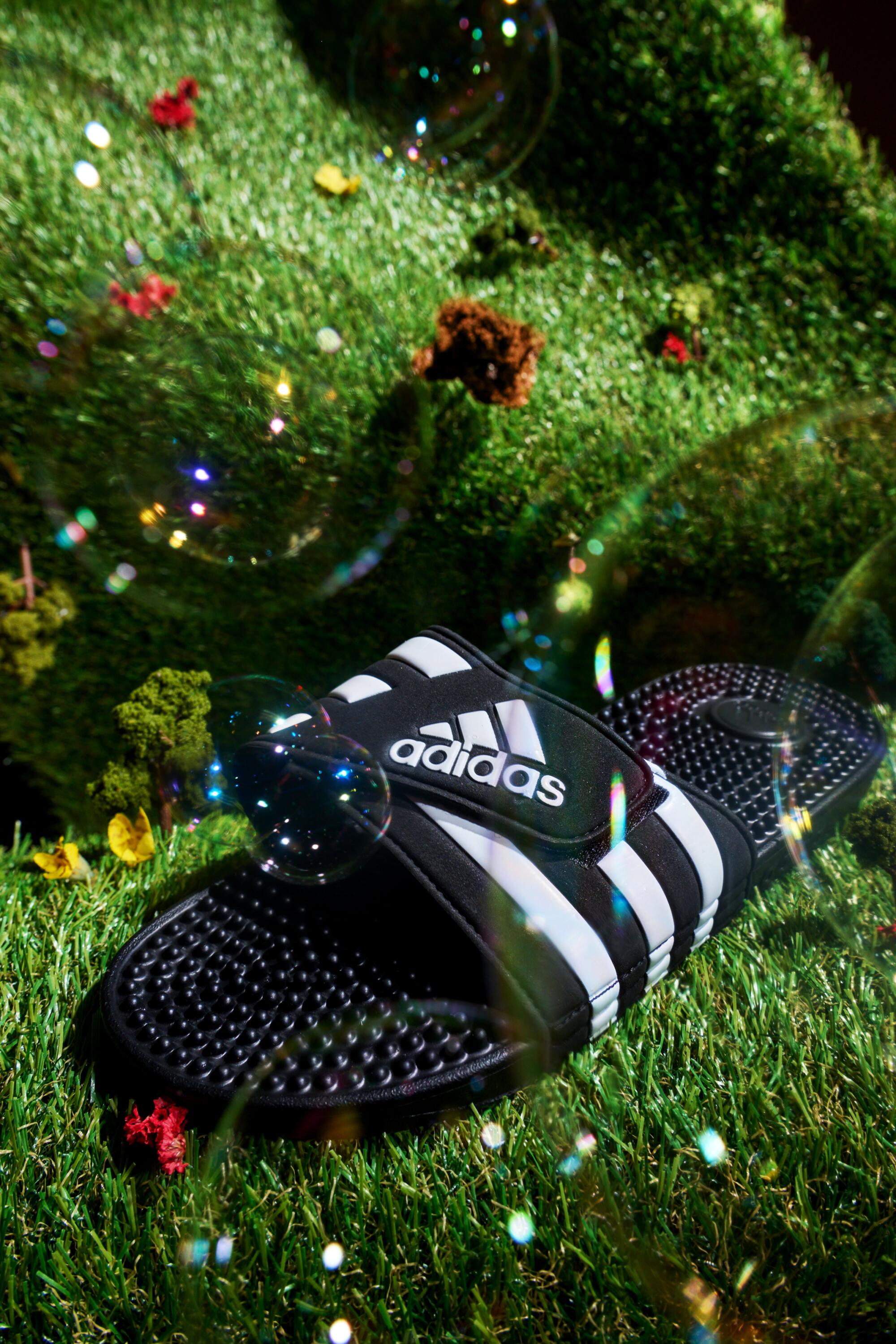
Adidas slides, or Adilettes, were created in 1963 for European football players who wanted something easy to slip on as they hit the locker rooms. They were designed to be transitional, to ease feet tired from running long distances and slamming into hard leather balls, to be slipped on and forgotten as they went from changing room to shower to home.
The famously spiky soles of the Adissage model — a later update to the series — were intended to be therapeutic, kneading your tired feet as you walk. But they’re equally famous because of how uncomfortable many find them, almost like an endurance test, the way ascetics lie on beds of nails. Even the Adidas website doesn’t recommend them as “all-day wear.” One theory of the tube sock pairing is that they help to buffer one’s feet against the spikes.
What constitutes the perfect fit? The residents of Highland Park, Lincoln Heights, Eagle Rock and other neighborhoods that make up Northeast L.A. seem to have decided once and for all: the skinny jean.
In L.A., where weather made them a year-round option, sandals were central to style and self-definition. When I was growing up, there were the Russian girls who loved the Roman wrap-up sandals that made them look war-ready; the occasional white nerds who wore Tevas with their cargo shorts; the girls across race with jelly sandals that made their feet look like sparkly aquariums. And then there was Johnny, queer and Latino — the first person I knew who attempted the faux-hawk, who wore V-necks or a pink shirt — who upgraded from the cheap, black rubber flip-flops many of us had to Havaianas, which were still relatively inexpensive but came in endless colors to match your outfit, and later, to the leather and more expensive Rainbows.
The slides were for men whose comfort was their fashion statement. Eric took pride in his slides. He didn’t show any deference to the old white men paying to be at the golf club; he literally dragged his feet as they waited for us to clear the greens for their approach shots.
The slides’ bluntness makes them outliers in the gentrification of sandals. Flip-flops were overtaken by Rainbows and other leather options: the straps replaced by thick bands; the thin soles, hardly more structured than a yoga mat, giving way to layered footbeds with contour and arch. Now you could wear flip-flops to a restaurant. The Tevas’ Velcro straps and solid rubber soles made them suitable for long walks and even hikes, and later acquired a hipster cool for their ugly functionality. Birkenstocks pride themselves on contouring to your foot and transformed that cachet of durable craftsmanship into $400 designer collabs.
These upgraded sandals were one of the first turns toward the luxury comfort that would define us as millennials: a precursor to athleisure, a turn to being as cozy as possible while still upwardly mobile, and in doing so, collectively lowering the standard of what it meant to “dress up.”
Sunburned skin that needs soothing, cracked lips that need moisture, sweaty T-shirts that need replacing, ripped vacation bags. This is your survival kit for when things really heat up.
So what is it about those slides, which are neither comfortable nor upwardly mobile? Which were somehow embraced by men of color across Los Angeles in the early 2000s, and still appear again and again on white dudes who love Drake and in paparazzi photos of celebrities trying to buy coffee? Which, when I showed a luxury-brand version of the slide to a friend in preparation for this article, was met with the epithet “f—boy”? Why do they engender such scorn but refuse to die?
Maybe it’s their in-betweenness that’s made them endure — they don’t quite belong. Outside, they bring the home with the wearer, a similar effect to wearing a bathrobe, marking them somewhere on the spectrum between easy and free to lazy and entitled. Any space where the slides aren’t acceptable isn’t of interest to them anyway. And the way they drag across the ground shows the wearer isn’t in a hurry, won’t be seen running in them. Inside the home, they feel a little cold: Unlike a fabric or fur slipper, the plastic forms a hard barrier around the foot, and you always wonder when the wearer is going to step out to water the lawn.
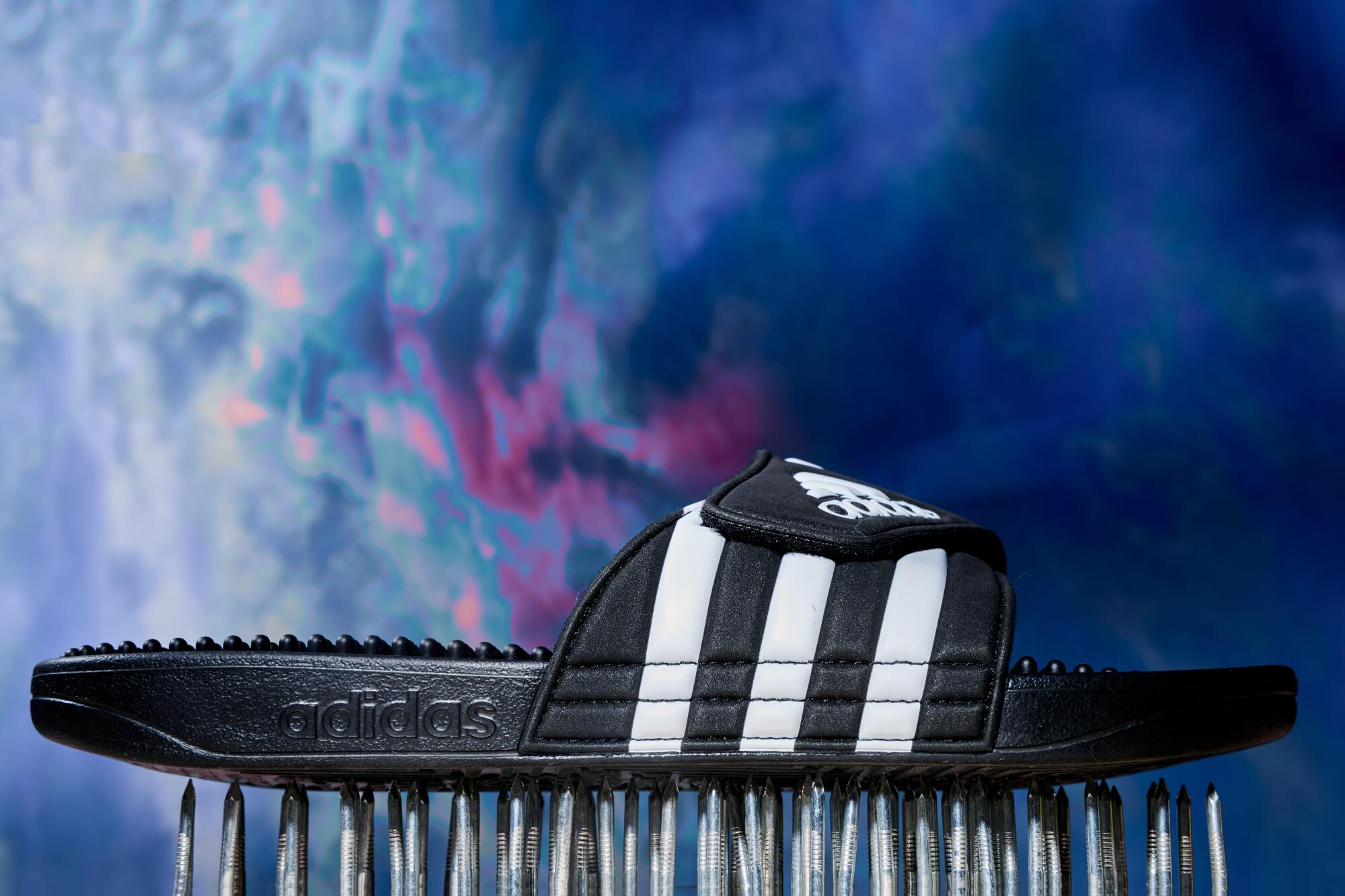
Today I’m taken back to my early-2000s Los Angeles, that odd crossing of subcultures and diasporas in which a group of Black, Persian and Korean kids from K-town and Fairfax and South L.A. found ourselves at an elite country club that cost $100,000 just to join, playing a game invented by medieval Scottish people. It was as if L.A. were in a sober and confused hangover from the O.J. Simpson trial and the Rodney King uprising the decade before, and its elites were doing penance by opening toward a multicultural future paved by Tiger Woods.
We’re in a moment not unlike that hangover of the 2000s, when social reckonings around race and class have forced institutions like media and fashion to reexamine themselves. That time on the golf course feels like it was a rehearsal for this moment, when I am again deciding how and when to enter institutions not built for me, to navigate the codes of speech and dress layered into their cultures. Eric had refused to do what I and many of my friends assumed we should do: assimilate. The Adidas slides held the discomfort of difference.
I spent a lot of hours with Eric as he shuffled across those lush, manicured fairways in Brentwood, taking his time on bad shot after bad shot. Once we were out of sight of the clubhouse and caddies and greenskeepers, it was a rare space of freedom for us city kids, where there was no one around and nothing to do but play this odd game. And in the cinematic nostalgia of my mind, even if it was just for three hours in golden afternoon light, Eric had made the course his home, and he was its relaxed king.
Ryan Lee Wong is the author of the forthcoming novel “Which Side Are You On.” He was born and raised in Los Angeles, lived for two years at Ancestral Heart Zen Temple, and is currently based in Brooklyn.
